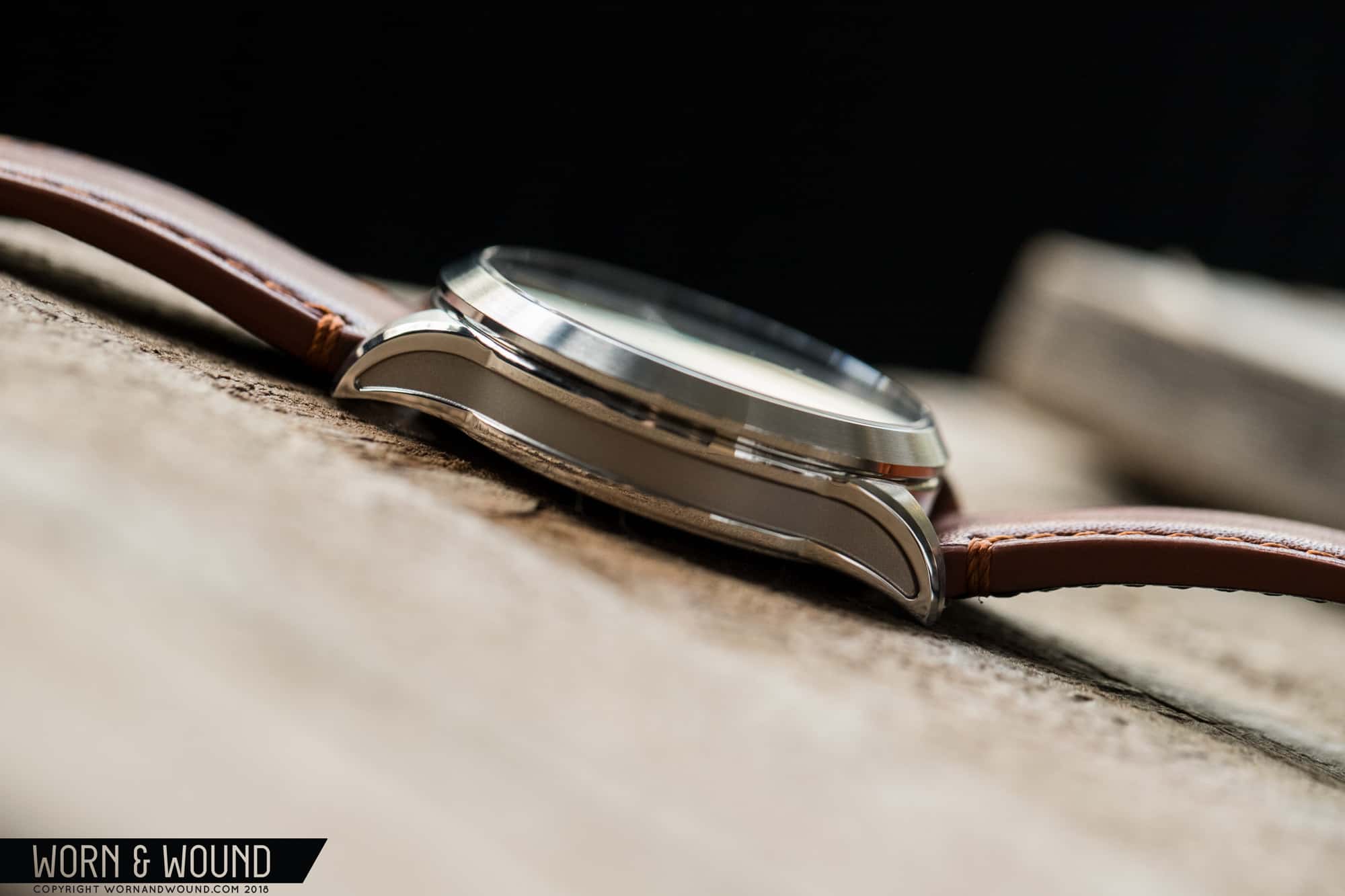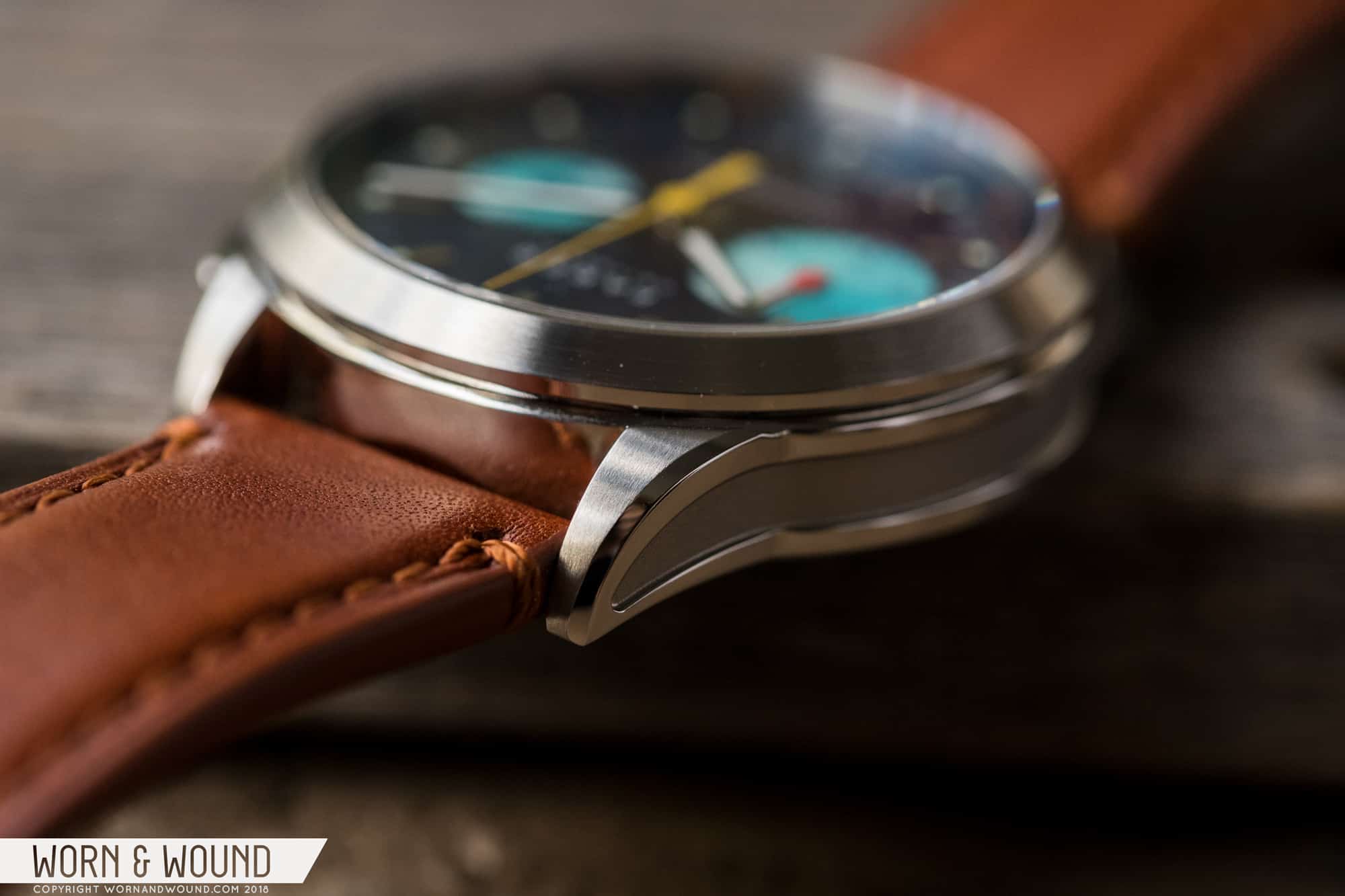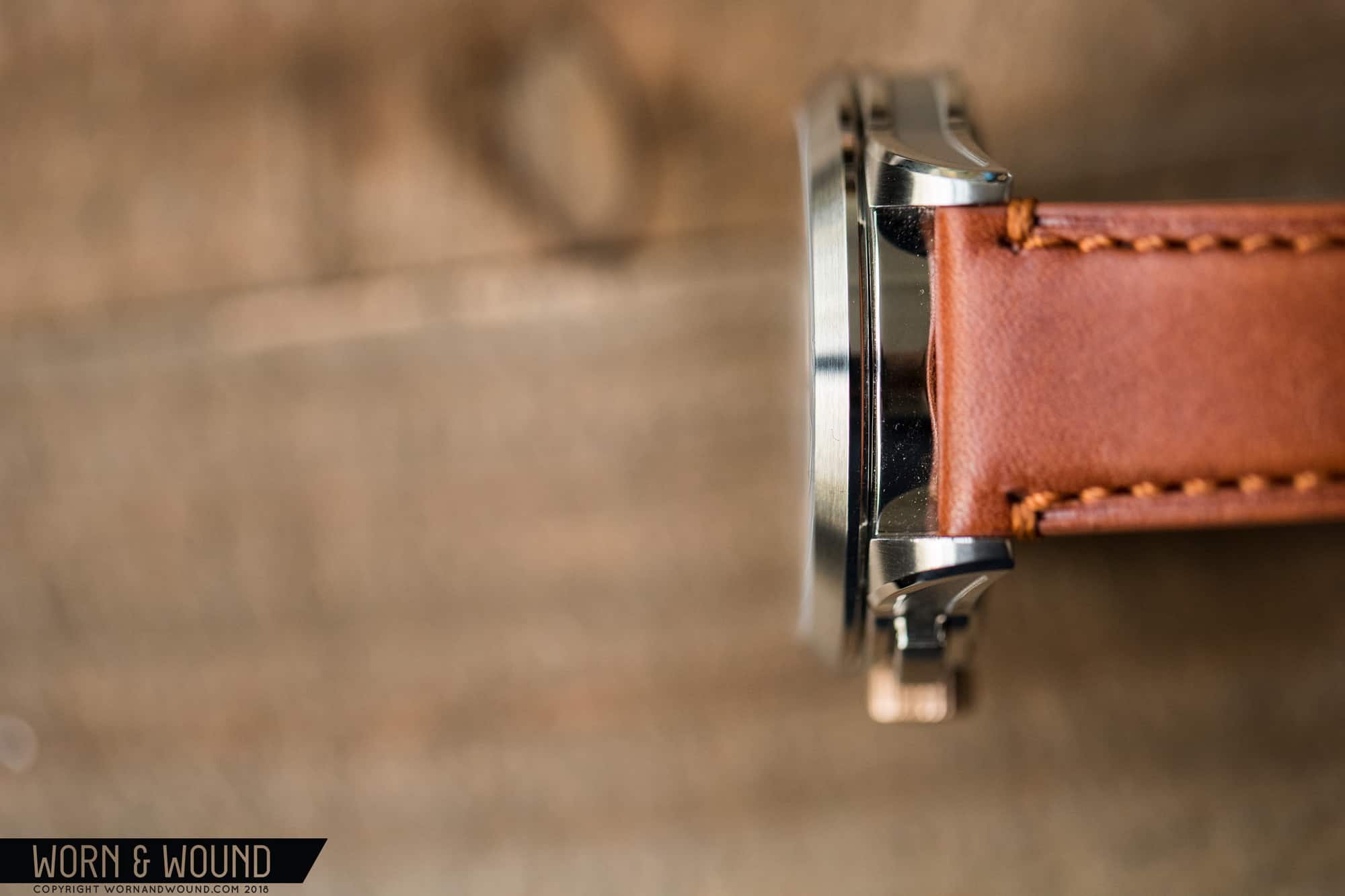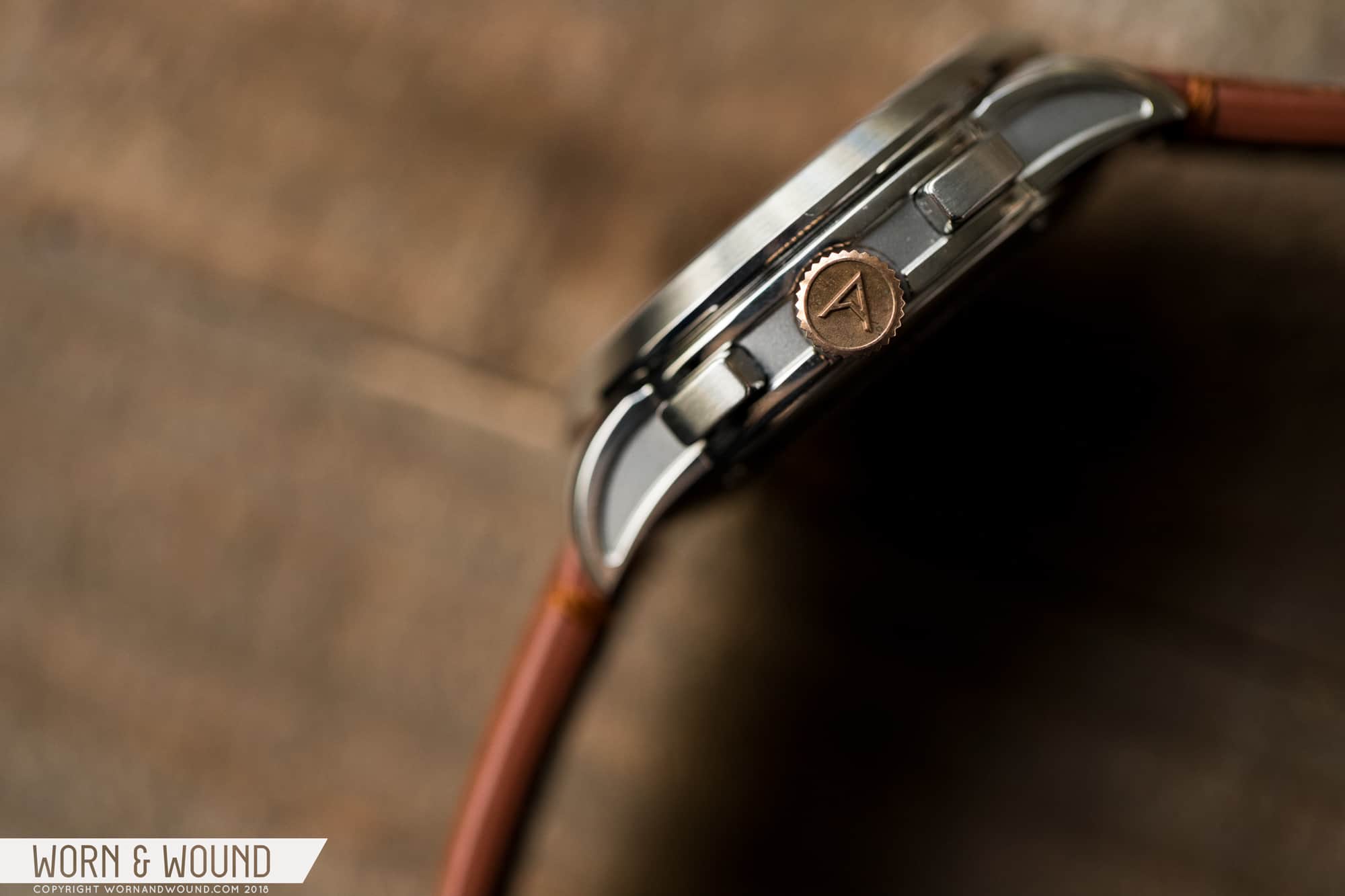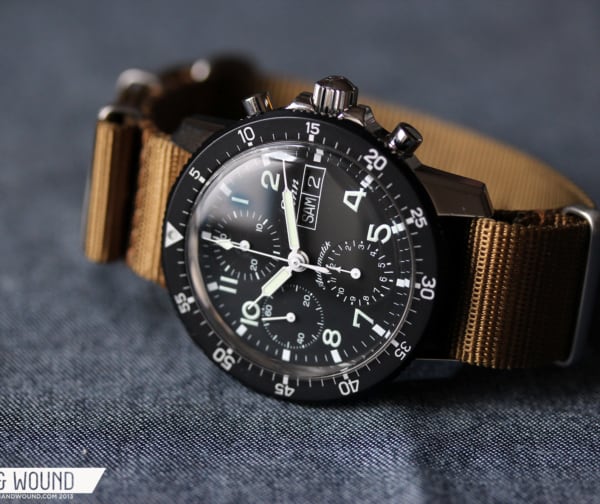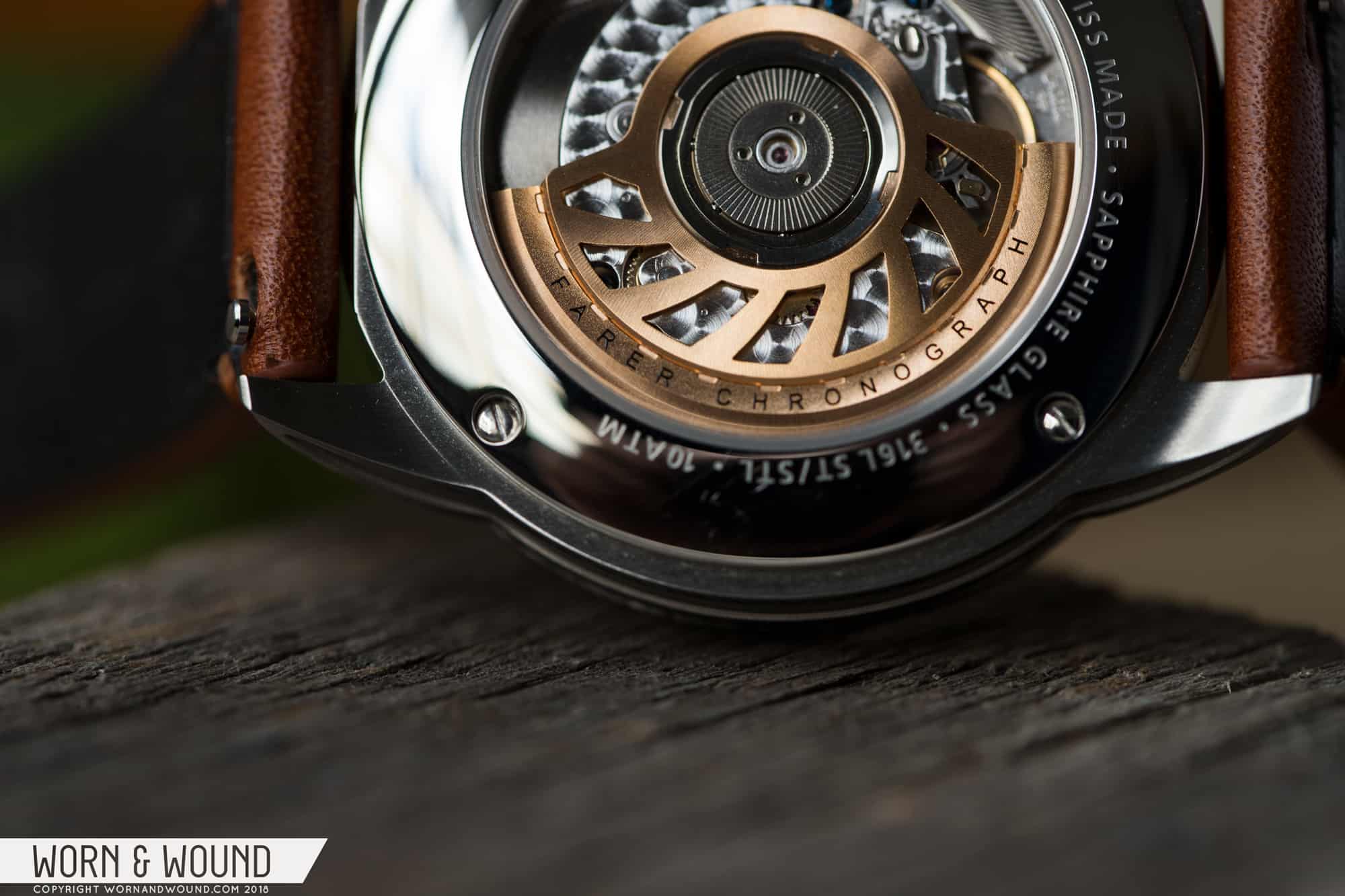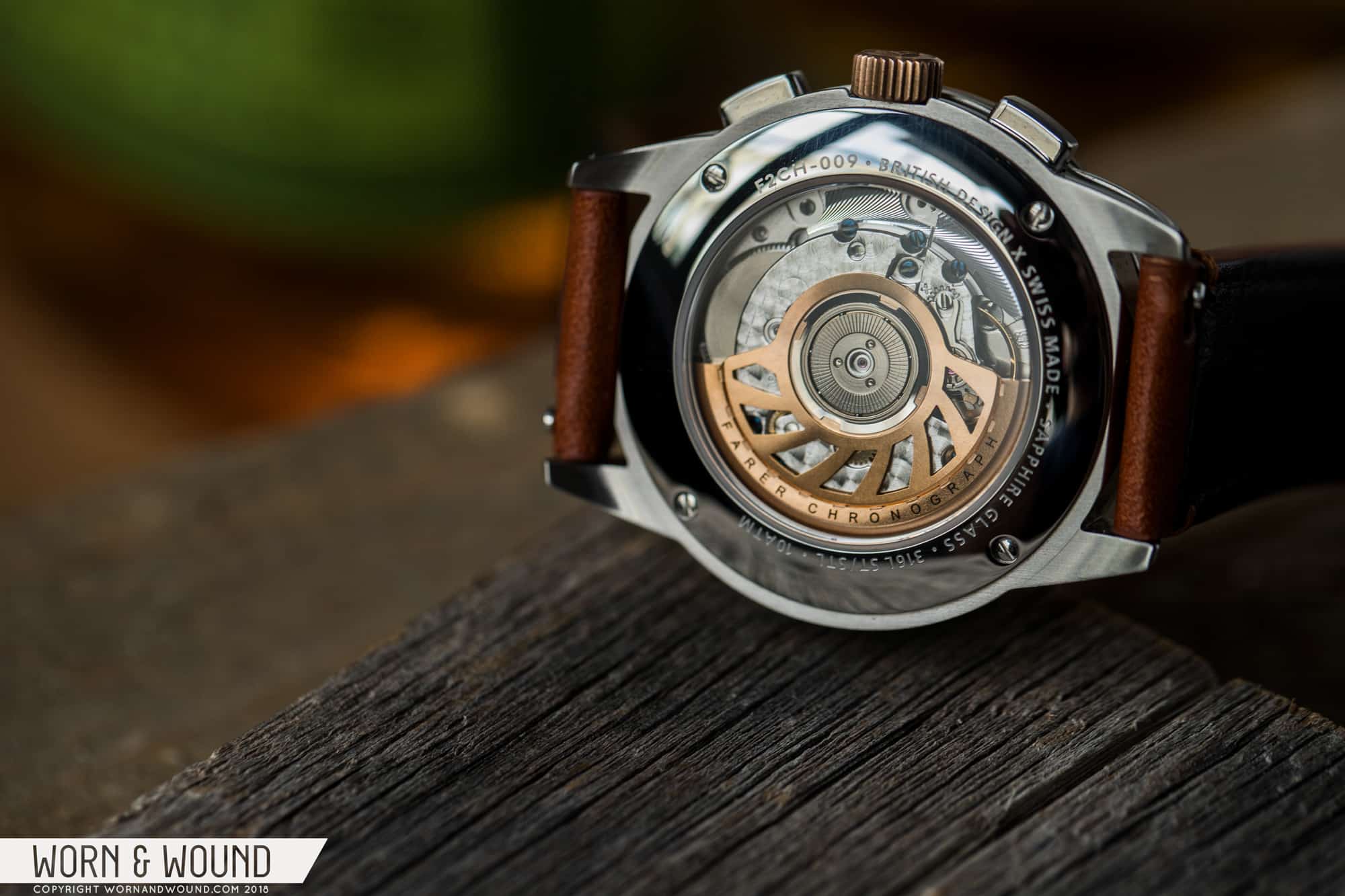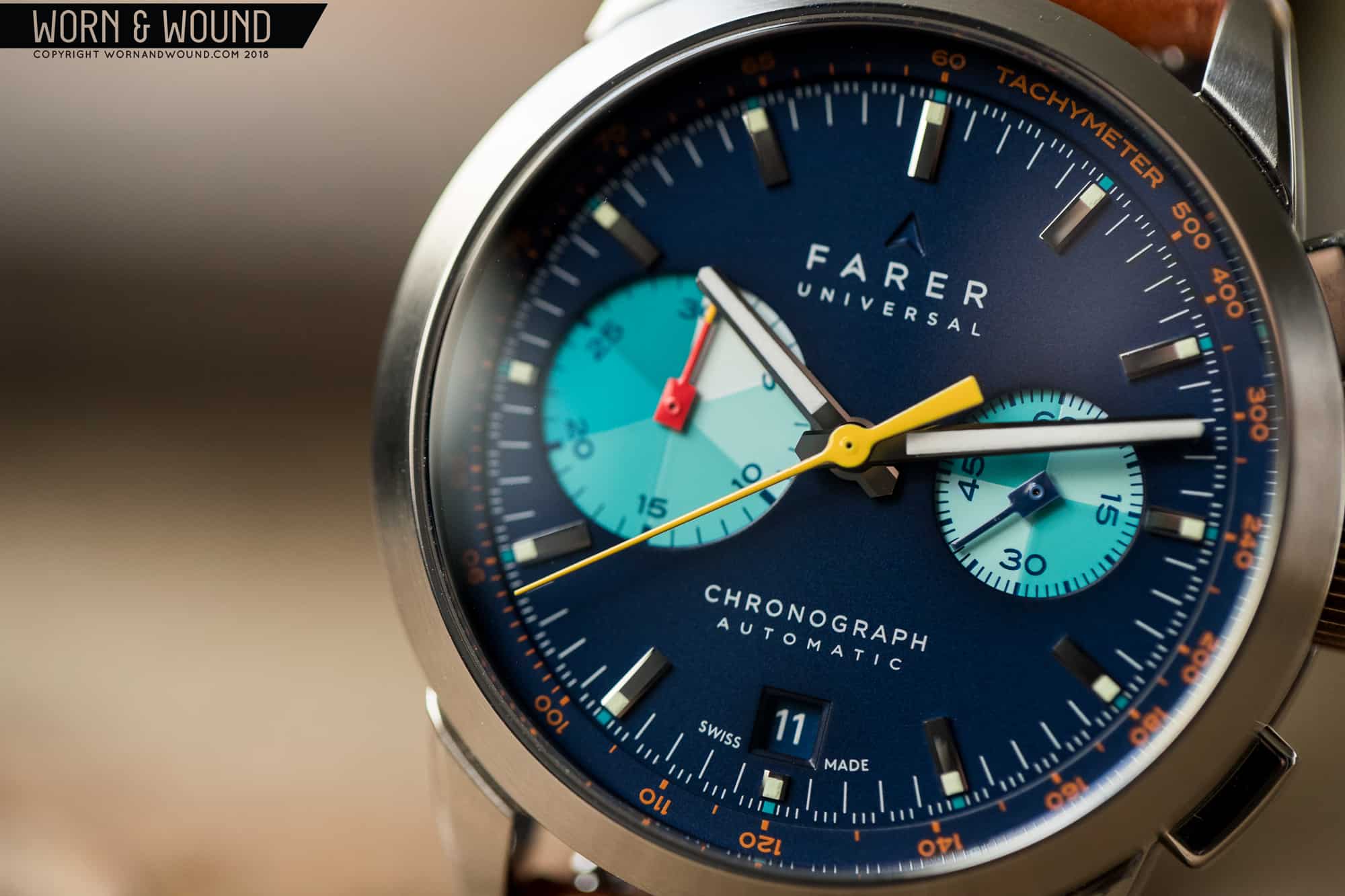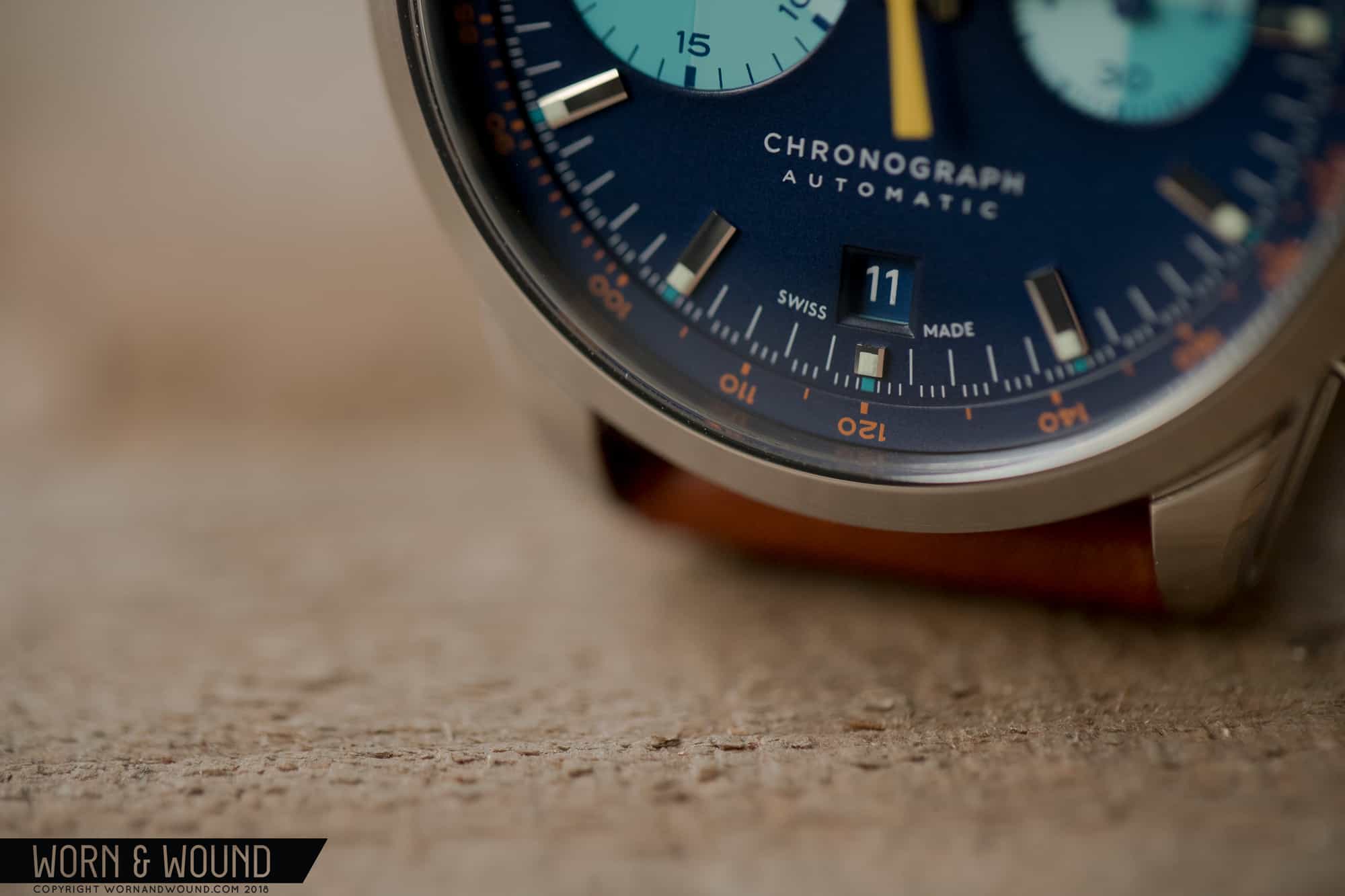In September, Farer launched their first series of Mechanical Chronographs. Continuing the brand’s now well-established formula for releases, Farer put out three distinct models—all sharing the same case but featuring wildly different dial designs and configurations. And, as one should now expect from Farer, the watches themselves showed once again that the British marque’s design team is not at all afraid of color.
We wrote about that initial release here, and to sum up I’ll just say that we were incredibly impressed with the watches. The team behind Farer, it seems to me, has never taken any shortcuts to get their watches out into the world. Each release has built on the one that’s come before it, exhibiting maturity in design, commitment to quality, and a unique aesthetic that shouts “Farer” from a mile away. The Mechanical Chronograph collection continues in that vein.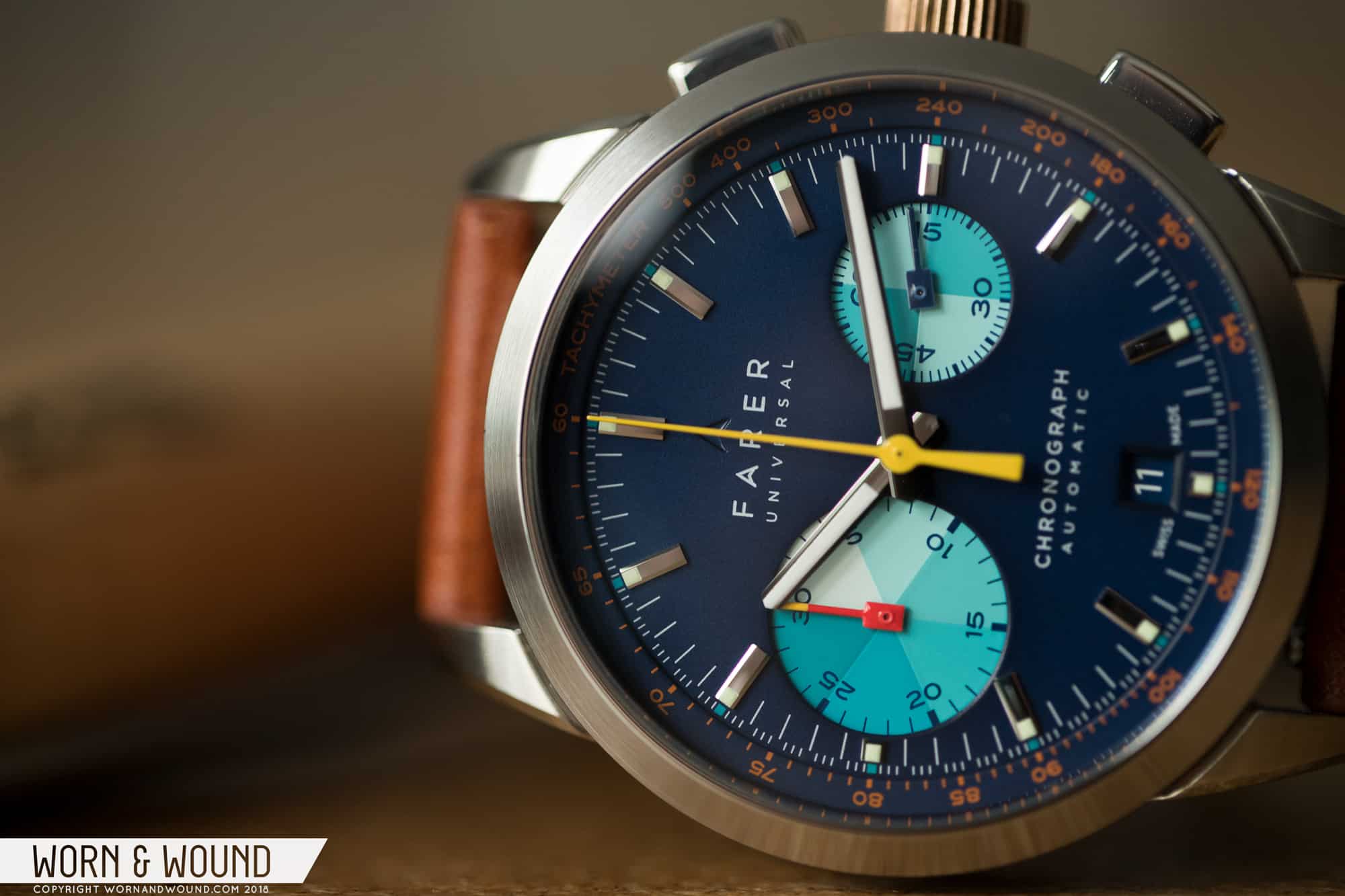 In today’s review, I’ll be taking a closer look at the Cobb, named after British racing motorist John Cobb. Featuring an asymmetrical “big-eye” dial with a distinctive color combination, the Cobb is an immediate eye-catcher. Now that I’ve worn the watch for a couple of weeks, I can confirm that my initial impressions have held up over time; this is a great timepiece—one that’s truly a joy to wear—and it’s so chock full of details that I spent countless moments over the past couple of weeks just admiring the darn thing on my wrist.
In today’s review, I’ll be taking a closer look at the Cobb, named after British racing motorist John Cobb. Featuring an asymmetrical “big-eye” dial with a distinctive color combination, the Cobb is an immediate eye-catcher. Now that I’ve worn the watch for a couple of weeks, I can confirm that my initial impressions have held up over time; this is a great timepiece—one that’s truly a joy to wear—and it’s so chock full of details that I spent countless moments over the past couple of weeks just admiring the darn thing on my wrist.









 Featured Videos
Featured Videos





